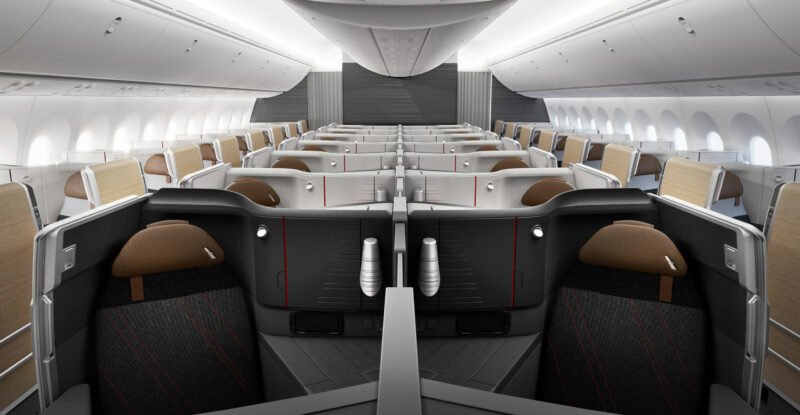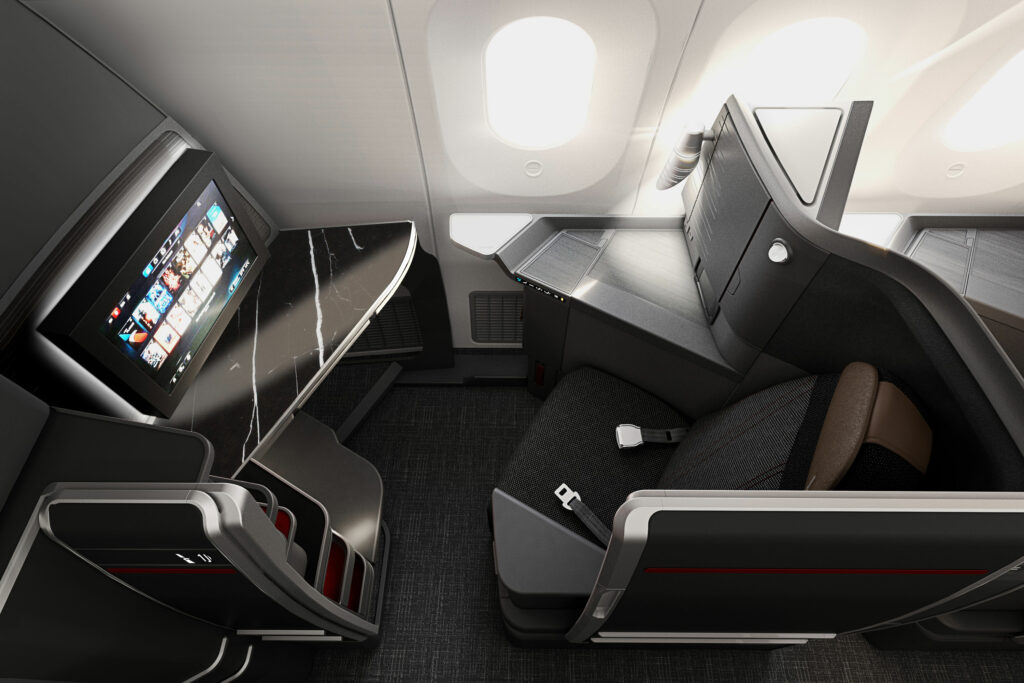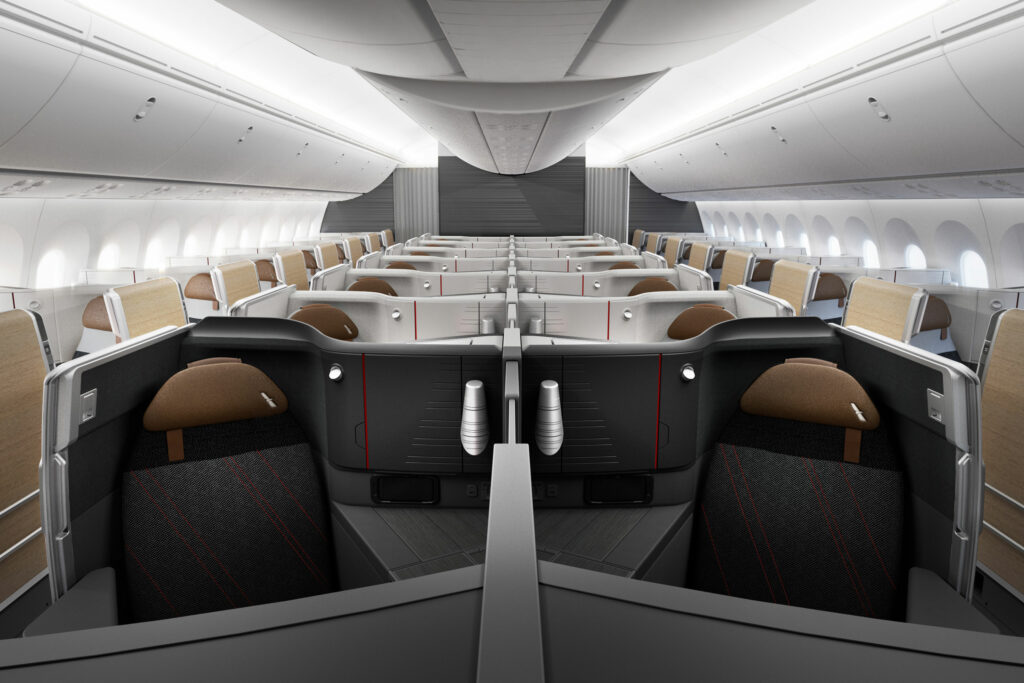 Buried at the bottom of a wide-ranging #PaxEx upgrade announcement touting new rotating amenity kits and upgraded pillow technology — and new culinary options including an edamame and mandarin orange slaw salad with baby spinach, wonton strips, roasted cashews, green scallion and red miso vinaigrette — American Airlines revealed more about its forthcoming front cabin product for its longhaul flights.
Buried at the bottom of a wide-ranging #PaxEx upgrade announcement touting new rotating amenity kits and upgraded pillow technology — and new culinary options including an edamame and mandarin orange slaw salad with baby spinach, wonton strips, roasted cashews, green scallion and red miso vinaigrette — American Airlines revealed more about its forthcoming front cabin product for its longhaul flights.
On first sight in 2022 your author called these seats — seemingly Collins Aurora for the Airbus A321XLR and confirmed by Adient on LinkedIn as Ascent for the Boeing 787-9 and refurbished 777-300ER — “solid but muted”.
Almost two years on, the volume hasn’t been turned up in any meaningful way.
A key question for the A321XLR product, when it arrives, is whether American’s implementation suffers from the “coffin class” problem given the relatively high walls and narrow confines of the space given over to this kind of product within the narrowbody cabin geometry.
On the two widebodies, the biggest news is the Flagship Suite Preferred seat, which is the front row of four seats in each business class cabin. While there is more space in the footwell thanks to the lack of tesselating monument in front, there are very few hard product bells and whistles in the front-row Preferred seat.
American promises a “distinguished front row experience on new Boeing 787-9 and retrofitted 777-300 aircraft” with this new product, mostly including soft product elements that other carriers offer within their regular business class, including a mattress pad, memory foam pillow, pyjamas, and throw blanket. One hopes that the ottoman area is certified for takeoff/landing so that there’s somewhere to store all this.
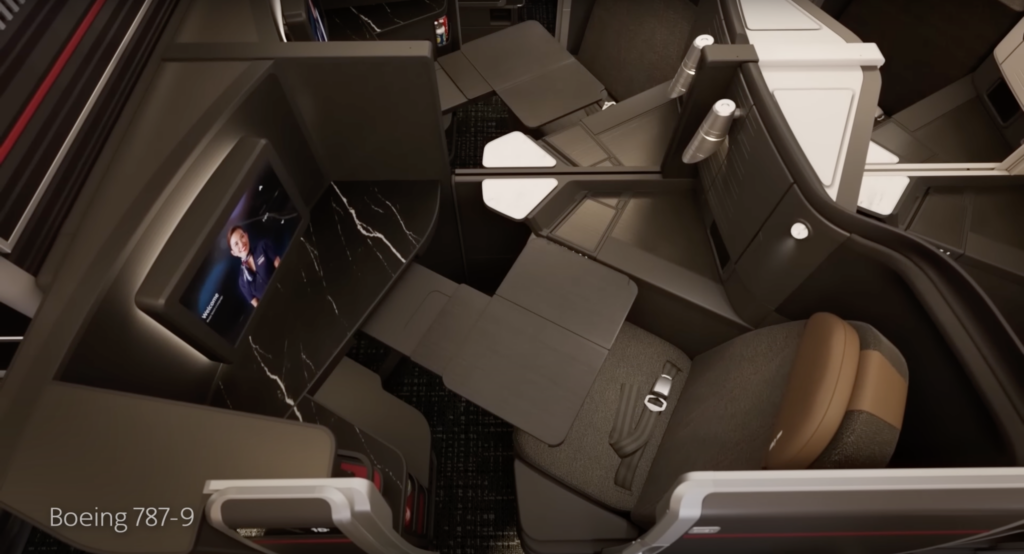
The overall effect underwhelms for a front-row-business-plus offering. Screenshot: American Airlines
There is, however, no partner dining option, no “cuddle class” for partners travelling together, and no big screens. Indeed, the inflight entertainment screen appears to be the same size (or not materially larger) than in the other rows, despite being mounted twice the distance away and thus appearing much smaller in use.
There doesn’t appear to be any supplementary shrouding between galley and front row, and the amount of noise and light coming from galleys in-flight is a key problem for front-row-business-plus seating on any airline, but especially on a US carrier where the front galley is where half the crew are likely to congregate for a chat.
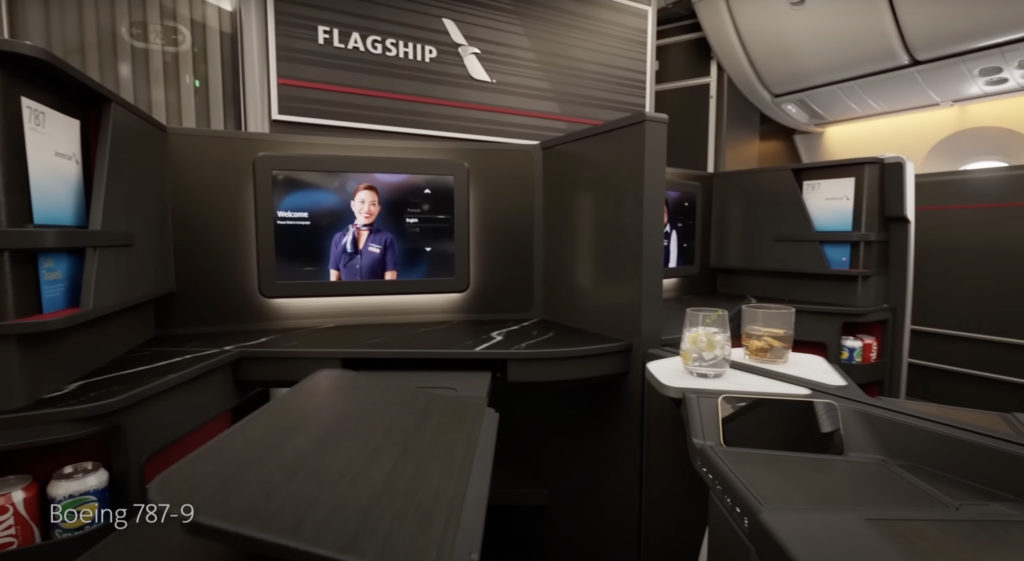
It’s hard to see the pricing premium benefit of sitting in one of the worst-located seats in the cabin for noise and light disturbance. Screenshot: American Airlines
Looking to the cabin from the front door — presumably where the first impression will be given — the aesthetic gives nothing quite so much as a Star Wars nod, with the black-clad front row seats resembling Darth Vader and the serried ranks of white shells behind being squads of Stormtroopers.
Further back in business, American is by no means the first to implement Adient’s Ascent. But in this particular implementation, there isn’t much moving of the passenger experience needle for American, for Ascent, or for cabin design.
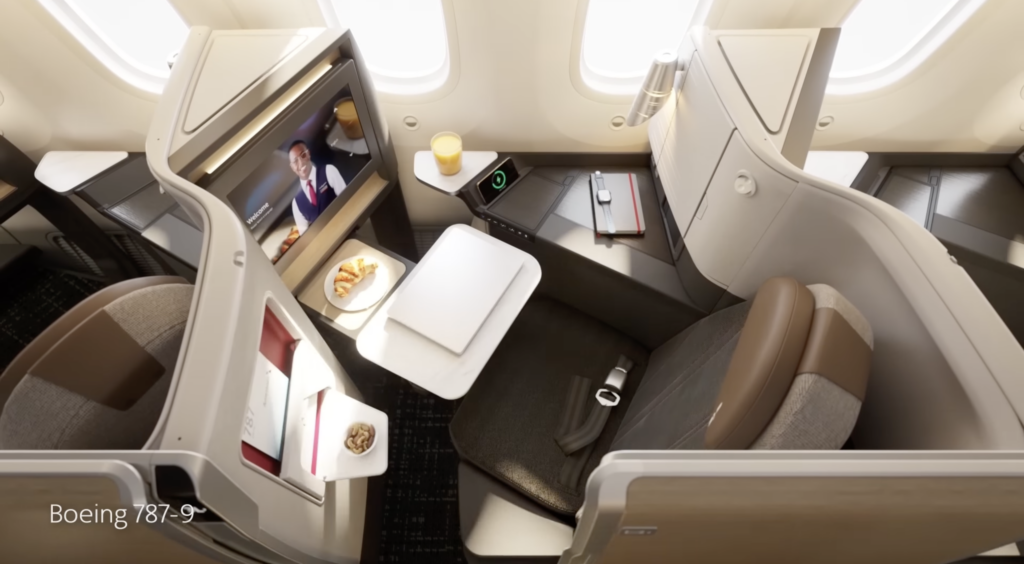
The CMF for the regular Flagship Suite business class is lighter and brighter. Screenshot: American Airlines
Apart from the door, there seems little passenger experience upgrade from the now-fifteen-year-old Cirrus seat version that American adopted wholesale from partner Cathay Pacific.
A critical question for American, of course, is how much of a premium it can demand for its products. Over the years since the resumption of longhaul international flying post-shutdown, it would be fair to say that American has found itself firmly in third place behind Delta and United by most passenger experience metrics.
Business class passengers are higher-information than they have ever been before, and an ever-growing amount of the information they have comes from fellow travellers wowed by new products and sharing online.
There’s no wow here, even — or especially — in the seats that American wants passengers to buy up to.
Related Articles:
- Narrowbody herringbones: the 3D Wave and why it needs a comeback
- American unveils solid but muted new business and business-plus suites
- Collins breaks 45° barrier for side-on Aurora inward herringbone
- Avoiding coffin class: the new inward-facing herringbone challenge
Featured image credited to American Airlines




